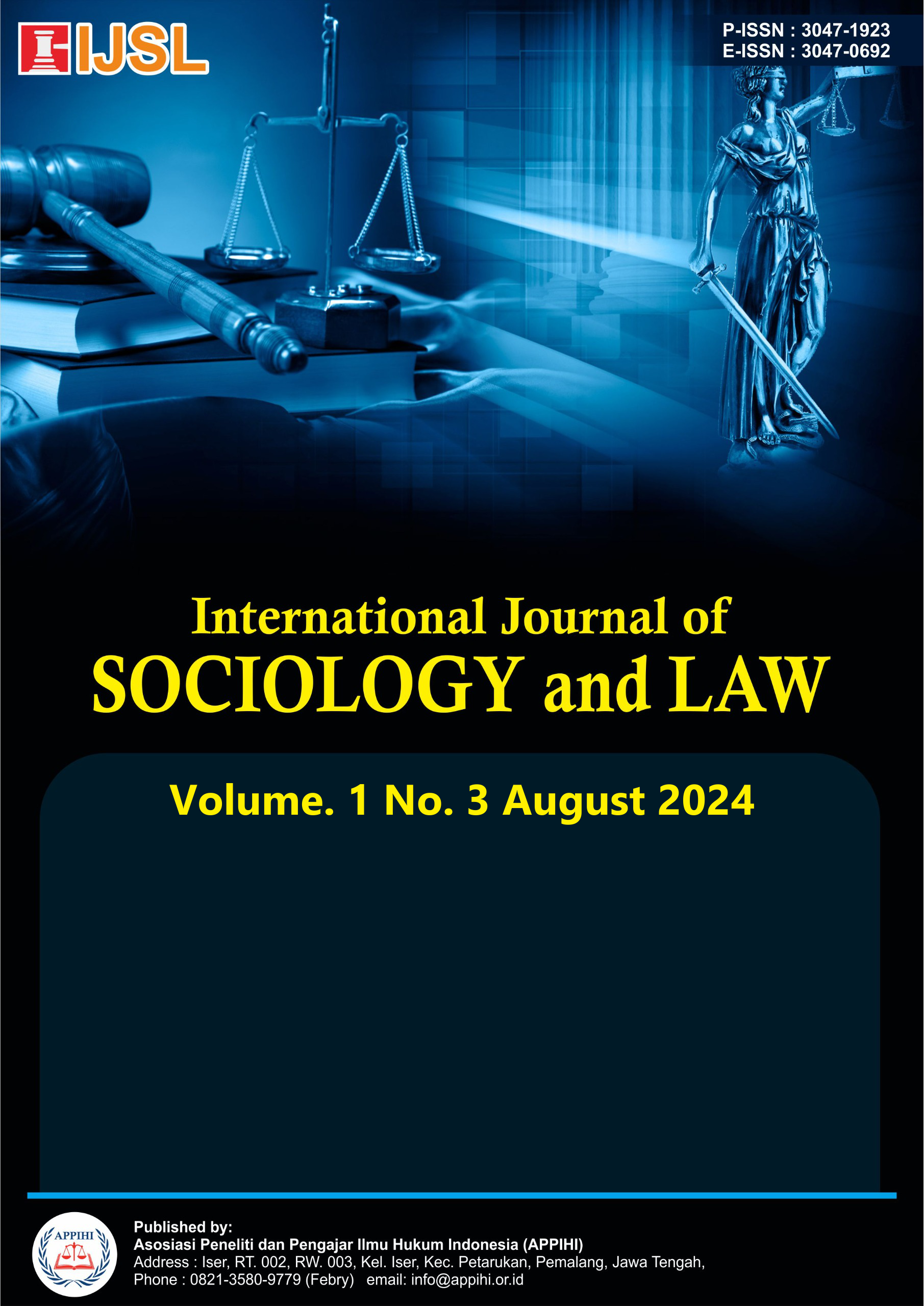Legal Protection Of Victims' Rights In The Settlement Of Criminal Cases
DOI:
https://doi.org/10.62951/ijsl.v1i3.128Keywords:
Protection, Law, Rights, Victims, Criminal ActsAbstract
Talking about victims of crime in general, of course, victims are individuals. In a criminal act, the victim is the party who is harmed by the perpetrator of the crime, both materially and immaterially. This greatly affects the psychological condition of the victim, not to mention the complicated judicial process that makes the victim a very disadvantaged party to the laws and regulations under it. The position of victims in the practice of criminal procedure law is relatively less considered because the provisions of Indonesian law still rely on protection for the perpetrator (offender oriented). Normative legal research is in the form of library research and written documents as data sourced from secondary data including primary legal materials, secondary legal materials and tertiary legal materials. The nature of this research is descriptive analysis. The data obtained in this research will be analyzed qualitatively in accordance with the specifications of the nature of the research to examine between theory and practice in legal protection of victims of criminal acts. To solve the existing problems and then draw a conclusion by utilizing the data collected through interviews and document studies, the results of this study were first analyzed using qualitative analysis. The Criminal Code (KUHP) has implicitly provided protection for victims of crime with all efforts to fulfill rights and provide assistance to provide security to victims who must be implemented by the Witness and Victim Protection Agency (LPSK) or other institutions in accordance with the provisions. As it is known that the KUHAP is not too optimal because there are more victims like the position of the perpetrator which results in a legal vacuum, and in the context of protecting victims of crime, there are preventive and repressive efforts made, both by the community and the government (through law enforcement officials). Another thing that is noted that in the Law on Witness and Victim Protection is the absence of coercive efforts regarding compensation from the perpetrator to the victim, namely not regulating the payment of compensation from the perpetrator to the witness or victim, even though the victim as a witness who is harmed by someone's unlawful actions, but is not protected.
Downloads
References
Achmad, A. (2009). Menguak Teori Hukum (Legal Theory) dan Teori Peradilan (Judicial Prudence) Termasuk Intrepensi Undang-Undang. Bandung: Kencana.
Arifin, S. (2012). Pengantar Hukum Indonesia. Medan: Medan Area University Press.
Ashshofa, B. (1996). Metode Penelitian Hukum. Jakarta: Rineka Cipta.
Atmasasmita, R. (2012). Sistem Peradilan Pidana Kontemporer (Cet. ke-2). Jakarta: Kencana.
Gosita, A. (2009). Masalah Korban Kejahatan (Cet. Pertama). Jakarta: Universitas Tri Sakti.
Harahap, Y. (2010). Pembahasan Permasalahan dan Penerapan KUHAP (Cet. ke-12). Jakarta: Sinar Grafika.
Koesna, R. A. (2005). Susunan Pidana dalam Negara Sosialis Indonesia. Bandung: Sumur.
Lubis, M. S. (1994). Filsafat Ilmu dan Penelitian. Bandung: Mandar Maju.
Muhammad, A. K. (2004). Hukum dan Penelitian Hukum. Bandar Lampung: PT. Citra Aditya Bakti.
Santoso, M. A. (2014). Hukum, Moral & Keadilan: Sebuah Kajian Filsafat Hukum (Cet. Kedua). Jakarta: Kencana.
Soekanto, S., & Mamuji, S. (1990). Penelitian Hukum Normatif Suatu Tinjauan Singkat. Jakarta: CV. Rajawali.
Sunggono, B. (2007). Metodologi Penelitian Hukum. Jakarta: RajaGrafindo Persada.
Waluyo, B. (2015). Viktimologi: Perlindungan Korban dan Saksi (Cet. Pertama). Jakarta: Sinar Grafika.
Wibawa, S. (1994). Evaluasi Kebijakan Publik. Jakarta: PT Raja Grafindo Persada.
Downloads
Published
How to Cite
Issue
Section
License
Copyright (c) 2024 International Journal of Sociology and Law

This work is licensed under a Creative Commons Attribution-ShareAlike 4.0 International License.





